
Contacto del proyecto:
Chris
+86 193-5550-1188
Chris@xdthermal.com
¿Qué es la refrigeración líquida?
La refrigeración líquida es un método que utiliza líquido en lugar de aire para entrar en contacto con la fuente de calor para refrigerar. Según el tipo de contacto entre el líquido refrigerante y los componentes electrónicos, se divide en refrigeración líquida indirecta y refrigeración líquida directa. La refrigeración líquida indirecta se basa principalmente en la tecnología de refrigeración líquida por placa fría, que permite la estandarización y la generalización. La refrigeración líquida directa se basa principalmente en la tecnología de refrigeración líquida por inmersión y puede clasificarse a su vez en tipos con cambio de fase y sin cambio de fase. Aunque la refrigeración líquida directa es más eficiente, requiere mayores costes de funcionamiento y mantenimiento, así como un diseño más riguroso y complejo.
Refrigeración líquida indirecta
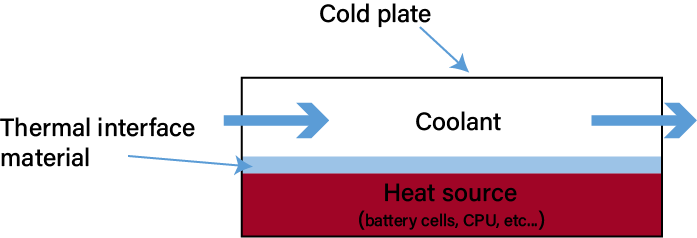
Placa de refrigeración líquida
Una placa de refrigeración líquida utiliza líquido como medio de transferencia de calor, que fluye a través de canales internos dentro de la placa. Se trata de una tecnología de refrigeración líquida sin contacto que consigue enfriar la fuente de calor a través de la transferencia de calor. En un sistema de placa de refrigeración líquida, los componentes que generan calor, como las baterías y los chips del servidor, no entran en contacto directo con el líquido. En su lugar, la disipación del calor se consigue mediante el montaje de una placa de refrigeración unida a los componentes electrónicos que requieren refrigeración.
Este planteamiento permite realizar modificaciones mínimas en los componentes generadores de calor existentes y en las piezas asociadas, lo que mejora la operatividad. En la actualidad, es la solución de refrigeración líquida más madura y de mayor aplicación. (Las placas de refrigeración pueden fabricarse mediante diversos métodos, como estampación, soldadura, mecanizado CNC, etc., y los distintos procesos de fabricación contribuyen a las distintas características de rendimiento del producto).
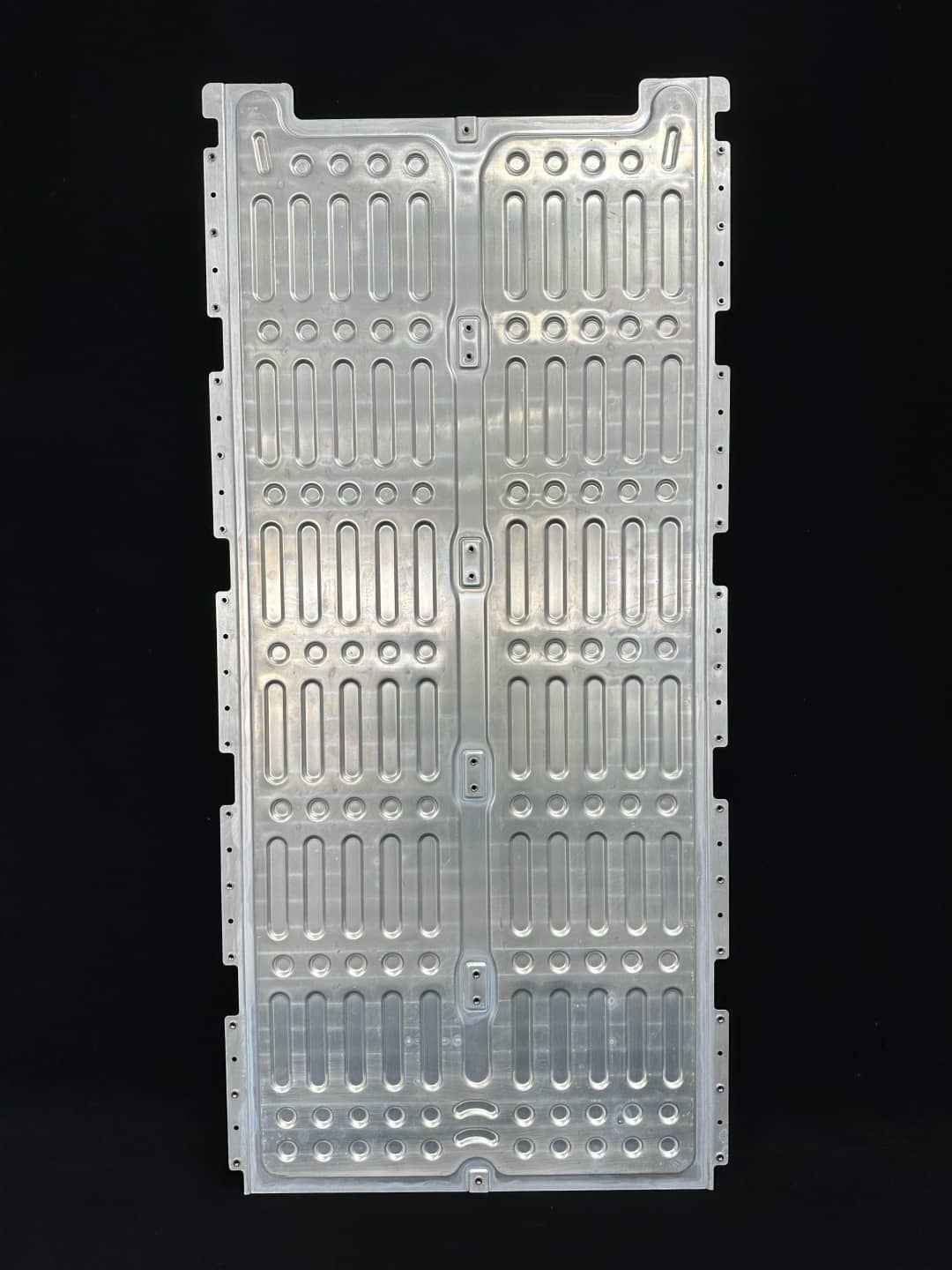
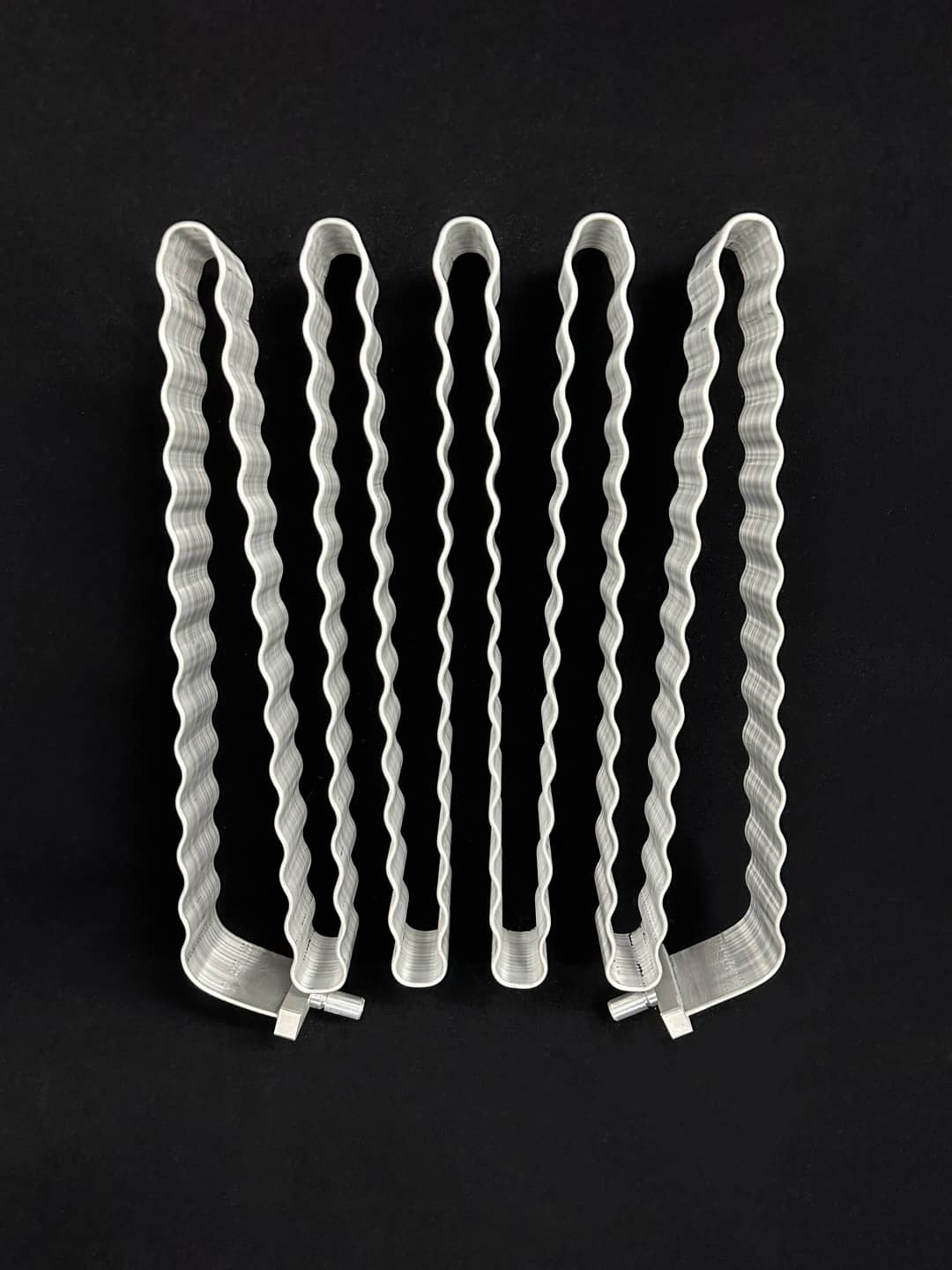
Tubo de refrigeración líquida/Tubo de refrigeración/Tubo serpentina
Compuestos de metal conductor térmico, normalmente cobre o aleación de aluminio, los tubos se someten a procesos de extrusión y ondulación para crear una estructura interna con un número determinado de canales. Estos canales se adhieren perfectamente a la superficie de las celdas de la batería. Normalmente, una o dos filas de celdas de batería se intercalan entre cada dos tubos planos serpenteantes. Este diseño aumenta eficazmente la superficie de intercambio de calor en el lado de la batería, favoreciendo una distribución más uniforme de la temperatura durante el funcionamiento de las celdas individuales y reduciendo la diferencia de temperatura global en todo el paquete de baterías.
Refrigeración líquida por tubo de calor
El sustrato de aluminio se mecaniza con CNC para fresar las ranuras y, a continuación, los tubos de cobre precurvados se prensan sobre el sustrato de aluminio con una máquina de estampación. A continuación, se sueldan entre sí y se procesan de nuevo para crear una placa de refrigeración por agua. Las placas de refrigeración líquida de tubo sumergido suelen presentarse en tres formas: placa de refrigeración líquida de tubo sumergido poco profunda, placa de refrigeración líquida de tubo sumergido profunda y placa de refrigeración líquida de proceso de sujeción de tubo de doble cara.
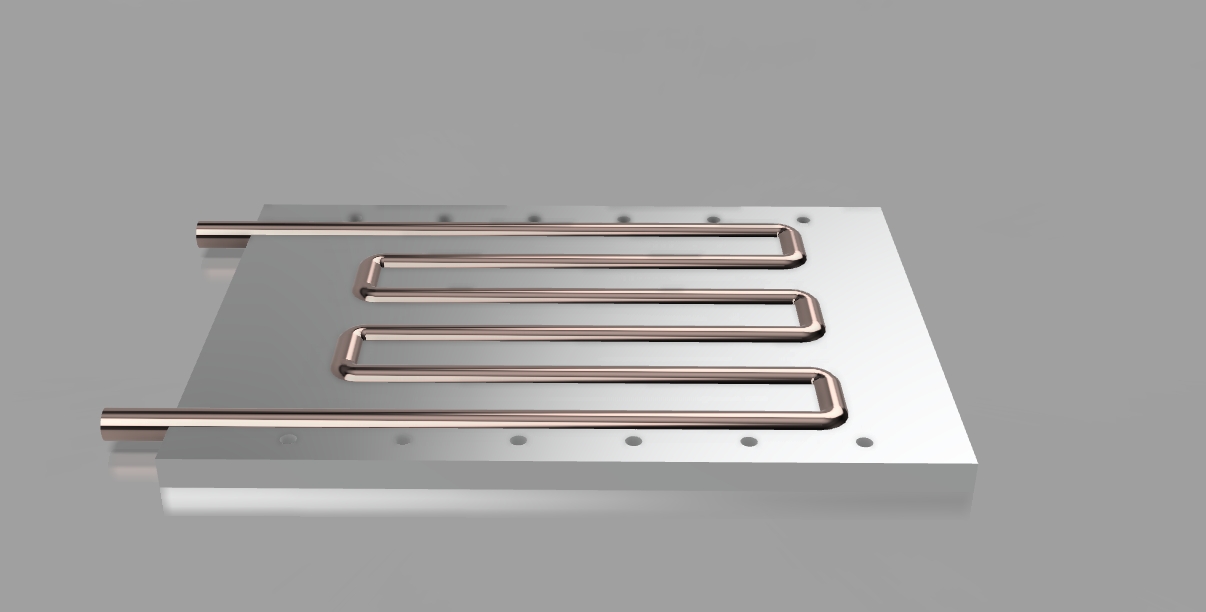
Refrigeración directa por líquido
Refrigeración líquida por inmersión
La refrigeración líquida por inmersión, una forma típica de refrigeración líquida por contacto directo, sumerge los componentes electrónicos calentados en un refrigerante (líquido refrigerante). Se basa en la circulación del líquido para eliminar el calor. Debido al amplio contacto directo entre los componentes que generan calor y el refrigerante, la refrigeración líquida por inmersión ofrece una mayor eficacia de disipación del calor en comparación con los métodos de refrigeración tradicionales (refrigeración por aire y refrigeración líquida). Además, tiende a tener niveles de ruido más bajos en comparación con las placas de refrigeración o la refrigeración líquida por pulverización.
Refrigeración líquida Splash
La refrigeración líquida por salpicadura es una tecnología de refrigeración líquida de contacto directo y pulverización de precisión diseñada para dispositivos electrónicos. El líquido refrigerante puede pulverizarse directamente sobre los componentes generadores de calor de los equipos informáticos o los materiales sólidos conductores del calor conectados a ellos, ya sea por gravedad o por presión del sistema. Esto permite el intercambio de calor, logrando la gestión térmica de los equipos informáticos.
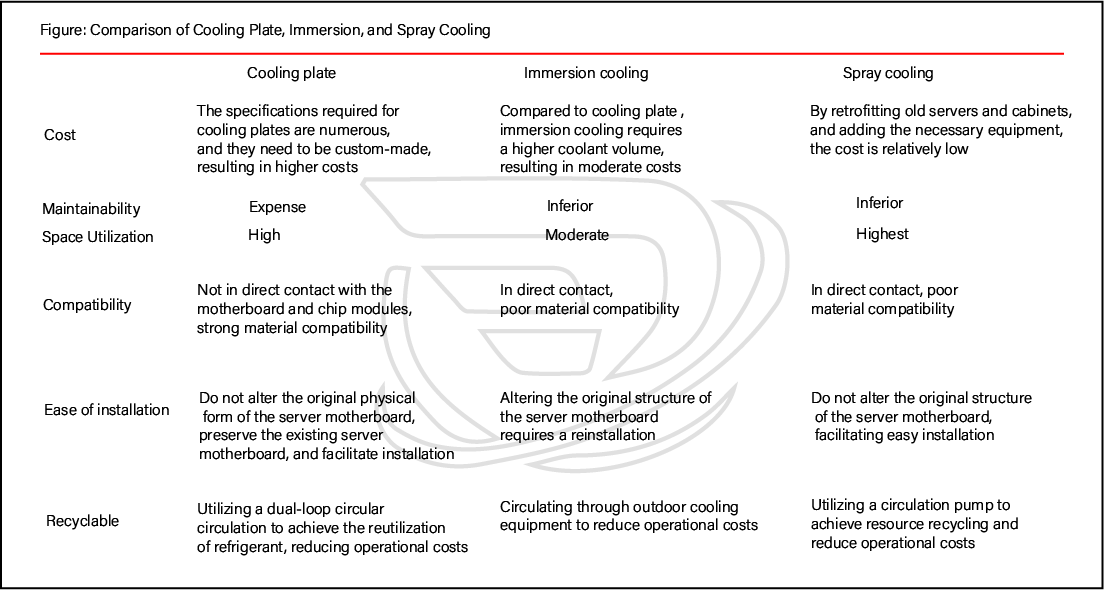
Campos de aplicación de la refrigeración líquida
Las primeras tecnologías de refrigeración líquida se desarrollaron principalmente para sustituir a los ventiladores y mejorar la eficiencia de la disipación del calor. En 2010, a medida que la tecnología de refrigeración líquida seguía mejorando, sus aplicaciones se ampliaron gradualmente. Tras años de experimentación e implementación, es evidente que la tecnología de refrigeración líquida se emplea ahora ampliamente en los sistemas de gestión térmica de diversos dispositivos electrónicos, los sistemas de refrigeración de paquetes de baterías de vehículos eléctricos, así como en componentes de automoción, maquinaria, almacenamiento de energía electroquímica y muchos otros campos. La tecnología ha madurado considerablemente. Actualmente, la mayoría de los chips de servidor utilizan placas frías de microcanales, y los vehículos eléctricos de nueva energía emplean tubos de refrigeración de líquido estampados o placas de refrigeración de líquido.
Tomando como ejemplo los vehículos de nueva energía, los sistemas de refrigeración líquida para baterías eléctricas
Debido al impacto de la temperatura en la capacidad, la seguridad y la vida útil de los sistemas electroquímicos de almacenamiento de energía, es necesario implementar la gestión térmica para el sistema de baterías de potencia de los vehículos de nueva energía.
Componentes del sistema de refrigeración líquida
El sistema de refrigeración líquida utiliza la alta capacidad calorífica del líquido refrigerante, que puede circular para eliminar el exceso de calor del sistema de baterías, logrando unas condiciones de temperatura de funcionamiento óptimas para el pack de baterías. Sus componentes básicos incluyen: radiador (placa de refrigeración líquida/tubo de refrigeración líquida), ventilador de refrigeración, depósito de expansión, bomba de refrigerante, refrigerante, circuito de refrigeración líquida (incluyendo mangueras, cableado de alta y baja presión, sensores de temperatura, válvulas) y unidad de refrigeración líquida (calentador opcional), entre otros. Los sistemas de refrigeración líquida suelen requerir diseños estructurales más complejos y estrictos para evitar la fuga de refrigerante líquido y garantizar la uniformidad entre las celdas individuales dentro del paquete de baterías.
Soluciones de gestión térmica
Las soluciones de gestión térmica de las baterías de potencia abarcan principalmente tres aspectos:
1.Refrigeración de la batería: Se consigue mediante la circulación de refrigerante a baja temperatura.
2.Precalentamiento de la batería: Métodos de calentamiento interno y externo.
3.Aislamiento de la batería En los paquetes de baterías de potencia que se aplican en regiones más frías, la caja de la batería suele requerir medidas de aislamiento para ralentizar la disipación del calor.
Principales factores que afectan a la eficiencia de la refrigeración (entre otros):
1.Temperatura ambiente (condiciones de funcionamiento)
2.Conductividad térmica de las celdas de la batería
3.Temperatura del líquido refrigerante
4.Caudal/velocidad del líquido refrigerante
5.Número de pilas/capacidad calorífica específica
6.Información relevante sobre la placa de refrigeración líquida
7.Conductividad térmica (conductividad térmica) de la interfaz térmica
Por qué la refrigeración líquida es mejor que la refrigeración por aire
Las ventajas de la tecnología de refrigeración por aire son su sencillez, bajo coste y fácil mantenimiento. Sin embargo, su eficacia de disipación del calor es relativamente menor, y puede que no satisfaga las demandas de la informática de alto rendimiento, los centros de datos y campos similares. La tecnología de refrigeración líquida puede ser más adecuada en estos casos.
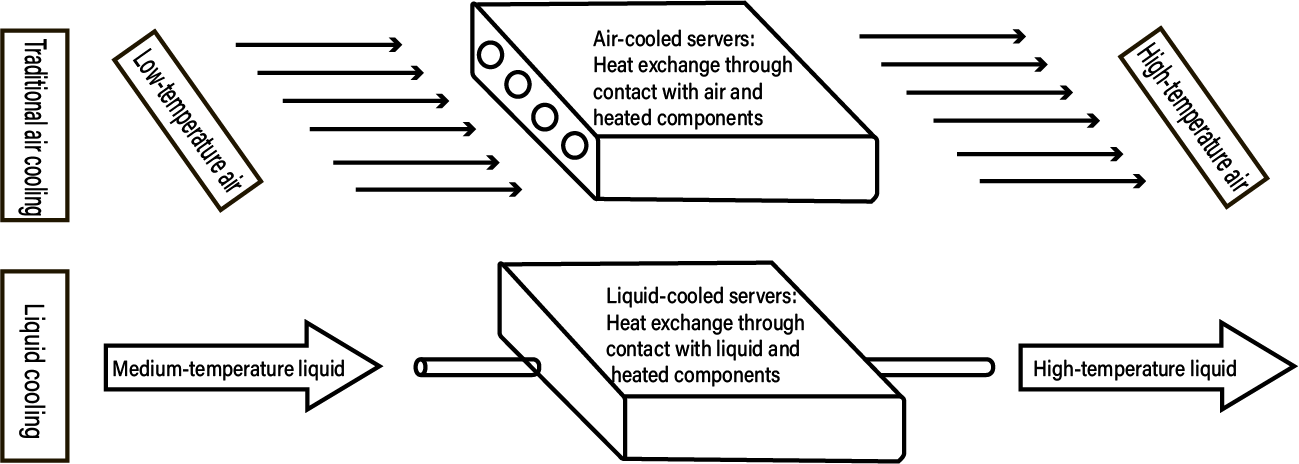
Ventajas de la refrigeración líquida:
1.Mayor Eficiencia de Disipación de Calor: La tecnología de refrigeración líquida puede reducir eficazmente la temperatura de los dispositivos, mejorando su rendimiento y vida útil. La conductividad térmica del líquido es superior a la del aire, lo que permite a la refrigeración líquida eliminar eficazmente el calor generado por los dispositivos.
2.Menor Nivel de Ruido: En comparación con el ruido producido por los ventiladores, la refrigeración líquida funciona con menor ruido, proporcionando un entorno de trabajo más silencioso.
3.Diseño más flexible: La tecnología de refrigeración líquida permite diseños más flexibles, permitiendo la instalación de radiadores y tuberías de líquido en diferentes ubicaciones para satisfacer mejor los requisitos de diseño del equipo.
4.Más respetuoso con el medio ambiente: La refrigeración líquida puede ahorrar energía y reducir el impacto medioambiental. En comparación con el calor generado por los ventiladores, el líquido puede reciclarse y reutilizarse más fácilmente.
Factores que impulsan el mercado de la refrigeración líquida
El solapamiento de políticas es el principal factor impulsor. La economía con bajas emisiones de carbono ha sido universalmente reconocida en todo el mundo, y tanto los gobiernos como los mercados conceden gran importancia al desarrollo ecológico y con bajas emisiones de carbono de las industrias. Por lo tanto, para las industrias y los operadores empresariales, las iniciativas ecológicas y de bajas emisiones de carbono, la reducción de costes y la mejora de la eficiencia no son solo requisitos del contexto medioambiental más amplio, sino también necesidades permanentes.
La razón fundamental de la penetración de la refrigeración líquida en el mercado es el aumento de potencia. En el contexto de los centros de datos, el desarrollo innovador de tecnologías como 5G, computación en la nube, big data y chips de IA de alto rendimiento ha provocado un rápido crecimiento de la escala y la cantidad de construcción de centros de datos. Según las predicciones, para 2025, se espera que la potencia media por armario en los centros de datos globales alcance los 25 kW. La enorme escala de las instalaciones y la creciente demanda de potencia de cálculo hacen que las tecnologías tradicionales de refrigeración por aire resulten inadecuadas para satisfacer los crecientes requisitos de disipación de calor de los centros de datos. La refrigeración líquida se ha convertido casi en la "única opción" para la construcción de los centros de datos de la futura generación.